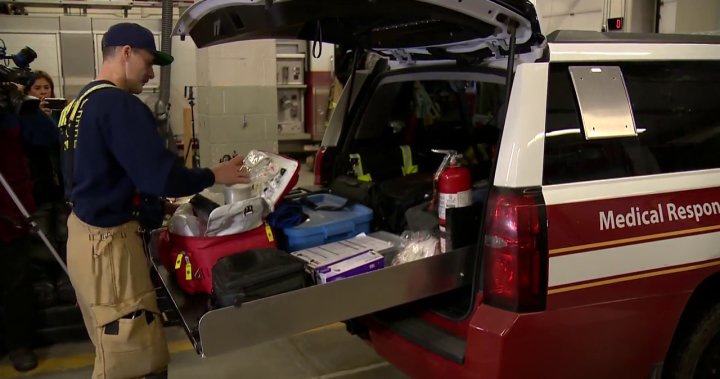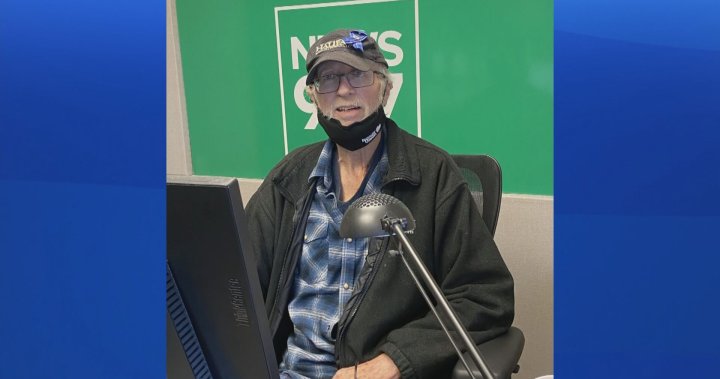Nearly four years after city budget cuts removed them, the Calgary Fire Department reintroduced its second medical response unit to help offset the “sharp” increase in medical emergency calls.
CFD chief Steve Dongworth said emergencies like cardiac arrests, overdoses and respiratory distress made up more than half of the fire department’s total call volume, and the number of calls are also going up.
The pair of trained firefighters in the medical response unit SUV will help free up other firefighting resources.
“By redeploying the smaller, lighter vehicles instead of a full fire response and crew, we can ensure that the right resources are allocated to each emergency situation,” Dongworth said.
“By reintroducing these medical response units, we’re able to redirect our heavier apparatus to address other emergencies, allowing us to maintain our efficiency and our response times, particularly in our busiest stations.”
Brought back last year at the downtown Station #1, the CFD’s medical response unit responded to nearly 6,000 calls. The second unit will operate out of the Beltline Station #2.
Get the latest Health IQ news.
Sent to your email, every week.
Firefighters in Calgary respond to medical emergencies from the two highest-severity calls, and are sometimes able to provide first aid before EMS crews with AHS arrive, by administering things like defibrillators, oxygen, naloxone, CPR, blankets and c-spine preparation.
Dongworth noted the CFD medical response units do not have the ability to transport patients to hospital — a role EMS fulfils.
Before it was introduced in a press conference, the Beltline-assigned medical response unit was dispatched to a cold exposure call on Tuesday morning, when a passerby called 911 concerned about the condition of someone they saw in an alley.
Mike Kopp, one of the firefighters on that call, said getting the SUV into the alley was much easier than a full size firetruck.
“We showed up and checked on them. They were okay. They walked away,” Kopp said.
The fire chief said there has been a multi-year trend in increased calls to the fire department, with the CFD responding to nearly 15 per cent more calls last year.
The medical response units were added to the CFD’s 2023-2026 budget after council voted to cut them in 2019.
“It’s really good that (city) council made this decision to make this investment, because last year we countered that growth — which is driven substantially by downtown, by the core here — with the reintroduction of medical response unit number one. It certainly took the sting out of that,” Dongworth said.
“I think the introduction of this (second) unit will help us with the growth that will happen this year.”
Mayor Jyoti Gondek said the addition of the medical response units is a tangible example of a municipality having to cover an area of provincial responsibility.
She also noted it’s “disturbing” that the Alberta government isn’t matching the city’s annual $3.4 million for the medical response units.
“Right now, 55 per cent of the calls from the Calgary Fire Department are medical response calls. Opioid calls alone are up 45 per cent year-over-year,” Gondek said. “So our fire department needs a lot of support from the provincial government, who should really be covering the cost of medical calls.”
© 2024 Global News, a division of Corus Entertainment Inc.




